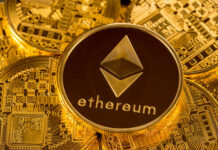Asia’s markets have overcome some Monday morning nerves to climb modestly into positive territory this morning. That followed a relatively quiet weekend on the news front, and after Wall Street hit a Covid-19 speed bump on Friday. The announcement that Apple would close again, some of its stores in Southern US states spooked Wall Street, sending equities into a modest retreat. Covid-19 disquiet appears to be tempering expectations across the region today.
That is hardly surprising with Southern US states cases racing higher, along with spikes in cases across South Asia and Latin America. One could rightly argue that none of these areas are second wavers, having never successfully emerged from wave one in the first place. The same argument could also be applied to Indonesia, where reopening proceeds apace; although as I sit here writing, large swaths of the country never bought into social distancing in the first place.
It is a cold hard fact, that many countries in the world do not have the work from home optionality of many developed nations. Or in the United States’ case, the political will from the government, or the libertarian tendencies of sections of the population, to really put in the hard yards that mass lockdowns bring. Growth over graves is an uncomfortable reality for much of the world, where most economic activity and employment takes place in the informal economy.
If much of the world has entered a group-think sense of denial, necessity and hope in reopening their economies, cracks seem to be appearing in those that one could classify as true second wavers. South Korea and China are battling stubborn new outbreaks, and the Australian state of Victoria has extended control protocols for another four weeks. Meanwhile, New Zealand is facing an uptick in cases arriving at its isolation facilities from overseas Kiwi’s returning home.
The persistence of Covid-19 seems to have given the FOMO-buy everything crowd pause for thought for now. The underlying driver to the get rich quick, global recovery rally remains; bottomless amounts of free central bank money sloshing around the global financial system. As I have argued before, the only thing that can really run that of the tracks, for now, would be secondary waves of Covid-19 outbreaks forcing key economies to initiate new population lockdowns.
The hopes of the airline industry from “corridors” and “travel bubbles” should be pared. Until a vaccine appears, that idea on a mass scale is dead on arrival. It is as believable an idea as Wirecard, its regulators, its shareholders, and its regulators, all thinking that EUR 1.9 billion of its money and its partners, should be held in trust accounts in Philippines Banks. Ooops. As a wise man once said, “there’s never just one cockroach.”
With the week’s data calendar book-ended by the China Loan Prime Rate (LPR) decisions this morning, and the US Durable Goods and GDP results on Thursday, markets look set to spend the early part of the week in self-reflection, rather than rampant buying. Tomorrow sees a flurry of PMI releases across the world, but the street will more than likely concentrate on Covid-19 and with it, a period of consolidation.
China left it’s one and five-year LPR’s unchanged this morning at 3.85% and 4.65% respectively. The result was as expected with China forging its own path monetarily through the pandemic slowdown. That appears to be via short-term liquidity injections, reductions in RRR rates, and instructing Chinese Banks to make fewer profits and lend more. The Pandora’s box of unconventional monetary policy in the West, is very easy to open, but appears to be very hard to shut; with the Federal Reserve’s taper-tantrum but one example.
Asia-Pacific stock markets edge into the green.
After sinking slightly initially, markets across the region have clawed back their early losses and have settled modestly in the green. The Covid-19 nerves shown by Wall Street have disrupted somewhat today, as the weekend passed without any significant surprises. One does detect a certain level of nervousness though, and I have no doubt, that the FOMO day traders will head for the exit door at the first sign of trouble.
The Nikkei 225 is up 0.40% with the Kospi unchanged. Mainland China’s Shanghai Composite and CSI 300 have climbed 0.20%. Singapore meanwhile has edged 0.20% higher, with the ASX 200 up 0.40% and the All Ordinaries flat for the session.
The Hang Seng has fallen by 0.40% today, weighed down by concerns over the official outline of China’s new security law for Hong Kong over the weekend. Hong Kong will struggle to rally this week as investors digest its full implications, most notably the apparent undermining of the independence of the judiciary. A preliminary draft of the official wording should arrive this week. Soothing words from Beijing are unlikely to mollify those fears.
US Dollar slips in Asia.
The Dollar continued to grind higher on Friday, with the dollar index creeping up by 0.19% to 97.61. With equity markets climbing into the green this morning, the Dollar has slipped across the board in muted trading. EUR/USD is up 0.15% to 1.1190, with AUD/USD up 0.30% to 0.6850, while USD/JPY is unchanged at 108.85.
A similar pattern is happening across the regional space, with the Dollar retreating slightly. The rally in oil prices over the past two days is likely to lend support to the Indonesian Rupiah and Malaysian Ringgit.
Overall, today’s trading session is a quiet one, with Europe likely to continue tentatively selling Dollars this afternoon. That said, a few negative Covid-19 headlines looks to be all it would take to turn that sentiment 180 degrees in quick time.
Oil continues to reach for the sky.
In an interesting divergence from the equity markets, oil prices continued to probe higher on Friday, although they gave back some of their gains late in the session. Brent crude traded to just shy of $43.00 a barrel, before falling to finish 1.35% higher at $42.00 a barrel. WTI broke through $40.00 a barrel, testing $40.50 a barrel, before retreating. It still though, finished higher by 1.90% at $39.80.
Trading is directionless in Asia, with Brent firming slightly to $40.30 a barrel, and WTI easing 20 cents to $39.60 a barrel. Both contracts appear content to adopt a wait and see attitude on a quiet news day in Asia.
Brent crude’s next technical target is $43.40 a barrel. Above there, it should attempt to close the chart gap from early March, and rally to $45.00 a barrel. WTI meanwhile, has traced pout a double top at $40.40 a barrel, which will probably provide some tough resistance initially. After that, its technical target is the $44.00 region followed by $45.00 a barrel, its 200-day moving average.
For today, although oil continues to impress with its resilience, it to, will be vulnerable to downside corrections if negative Covid-19 headlines hit the wires.
Is gold signalling that risk aversion is about to spike?
Gold caught the Covid-19 risk aversion wave on Friday, powering 1.25% higher to its daily resistance at $1745.00 an ounce. It has headed straight to go this morning in Asia, jumping to $1760.00 an ounce, before settling 0.50% higher at $1752.00 an ounce.
Gold’s price action is hinting that although risk aversion is restrained on equities and energy, tensions could be rising below the surface. Gold has resistance at $1760.00, followed by the May high at $1765.00. It is the later level that is the critical one, forming the top of the multi-month $1660.00 to $1765.00 range.
Gold has been here before, letting bullish traders down severely. The risk of yet another bull market trap is high, and until we see a daily close above $1765.00 an ounce, caution is warranted at these price levels. A daily close above $1765.00 however, should open up a fully-fledged assault on $1800.00 at long last. A fall back below $1745.00 an ounce though, will mean tears of despair once again for gold bugs.













